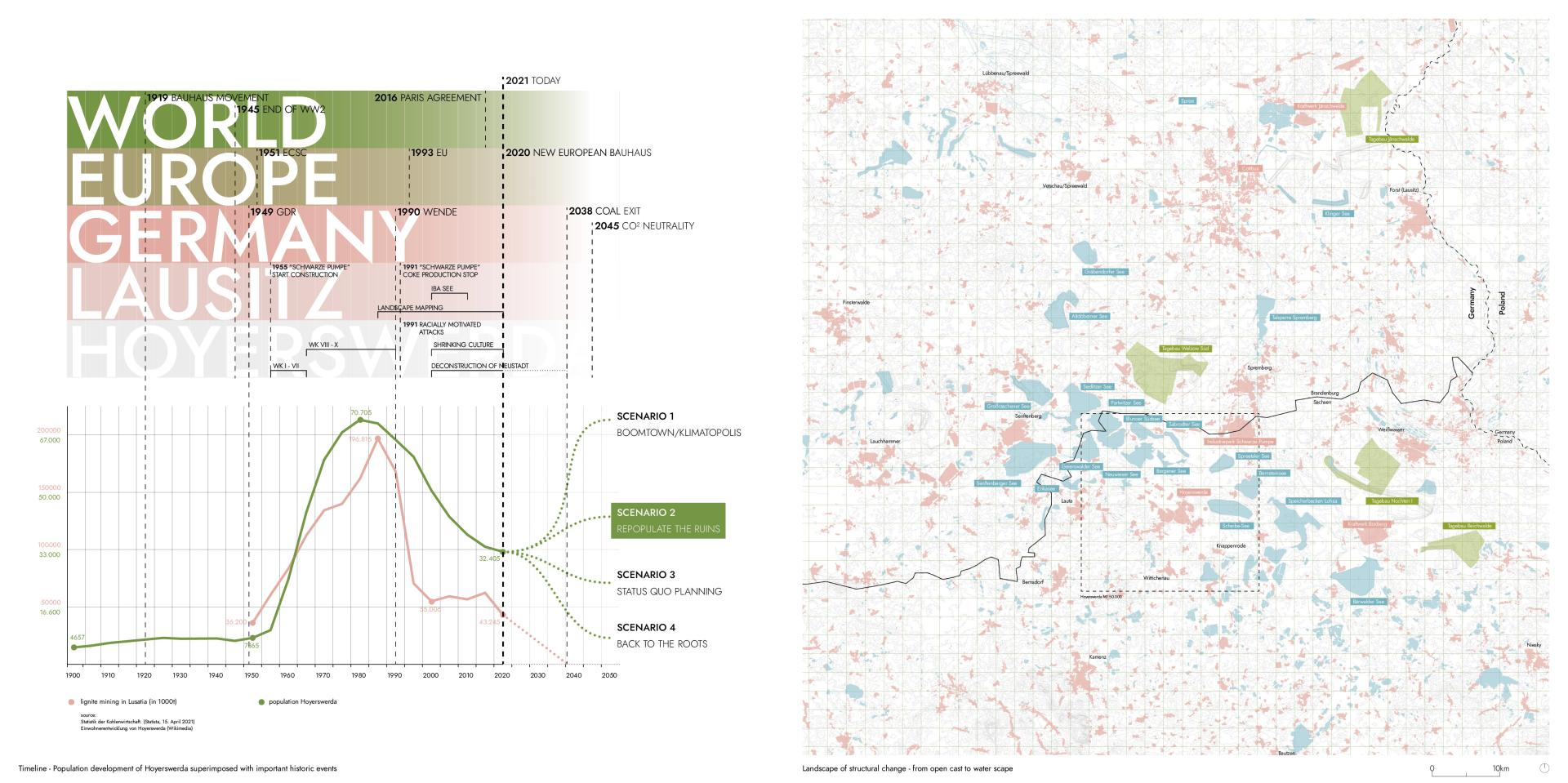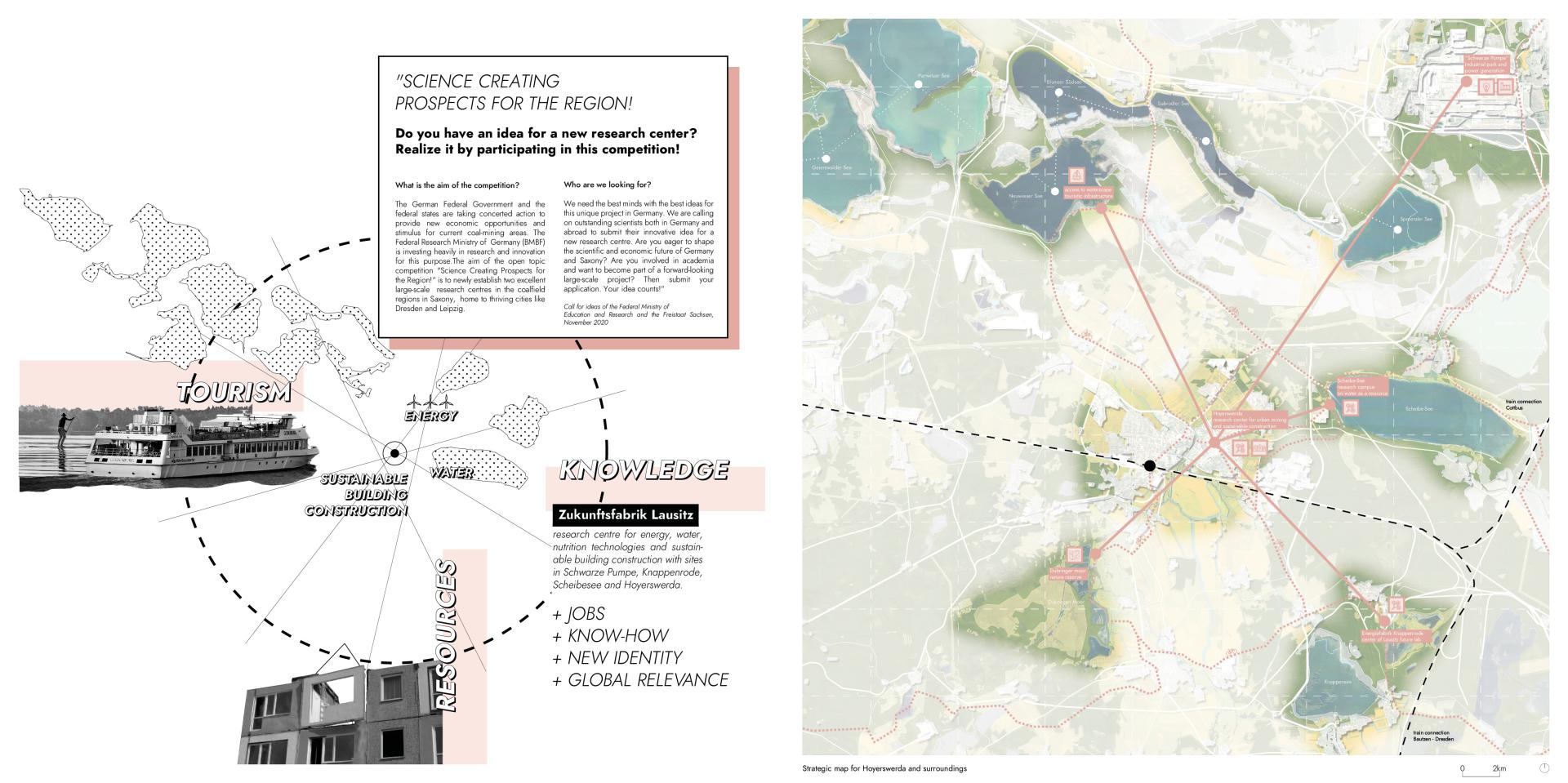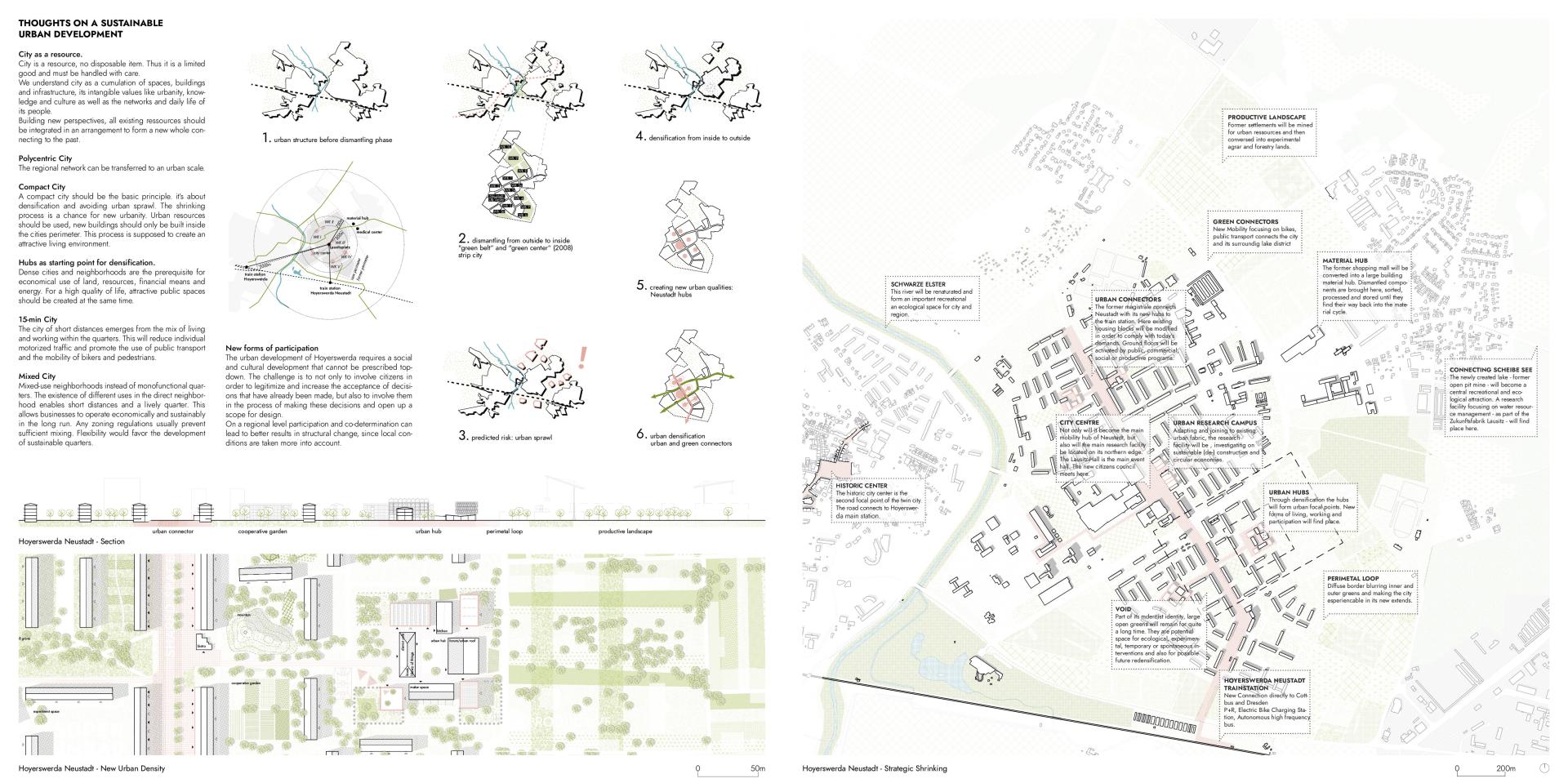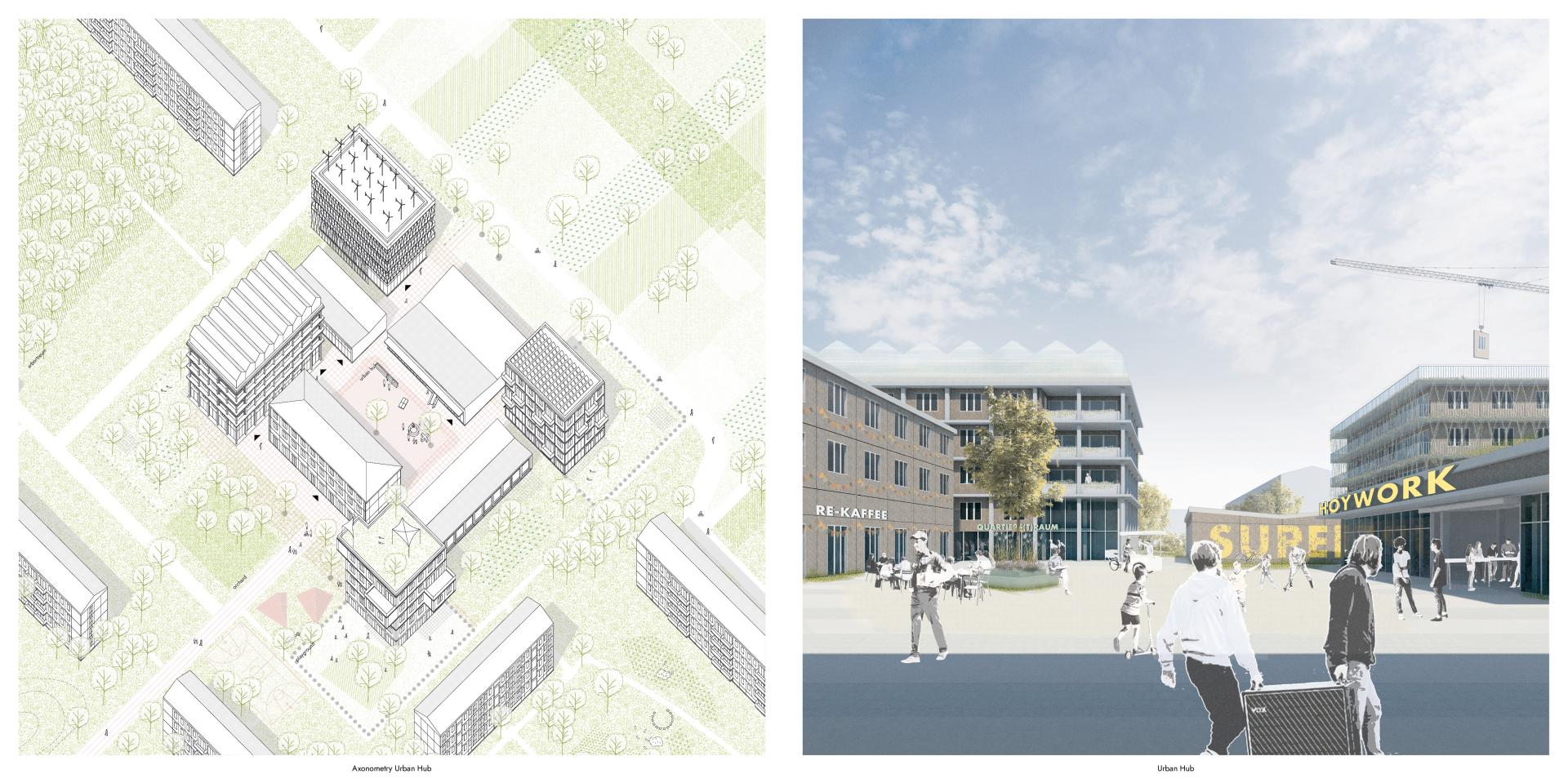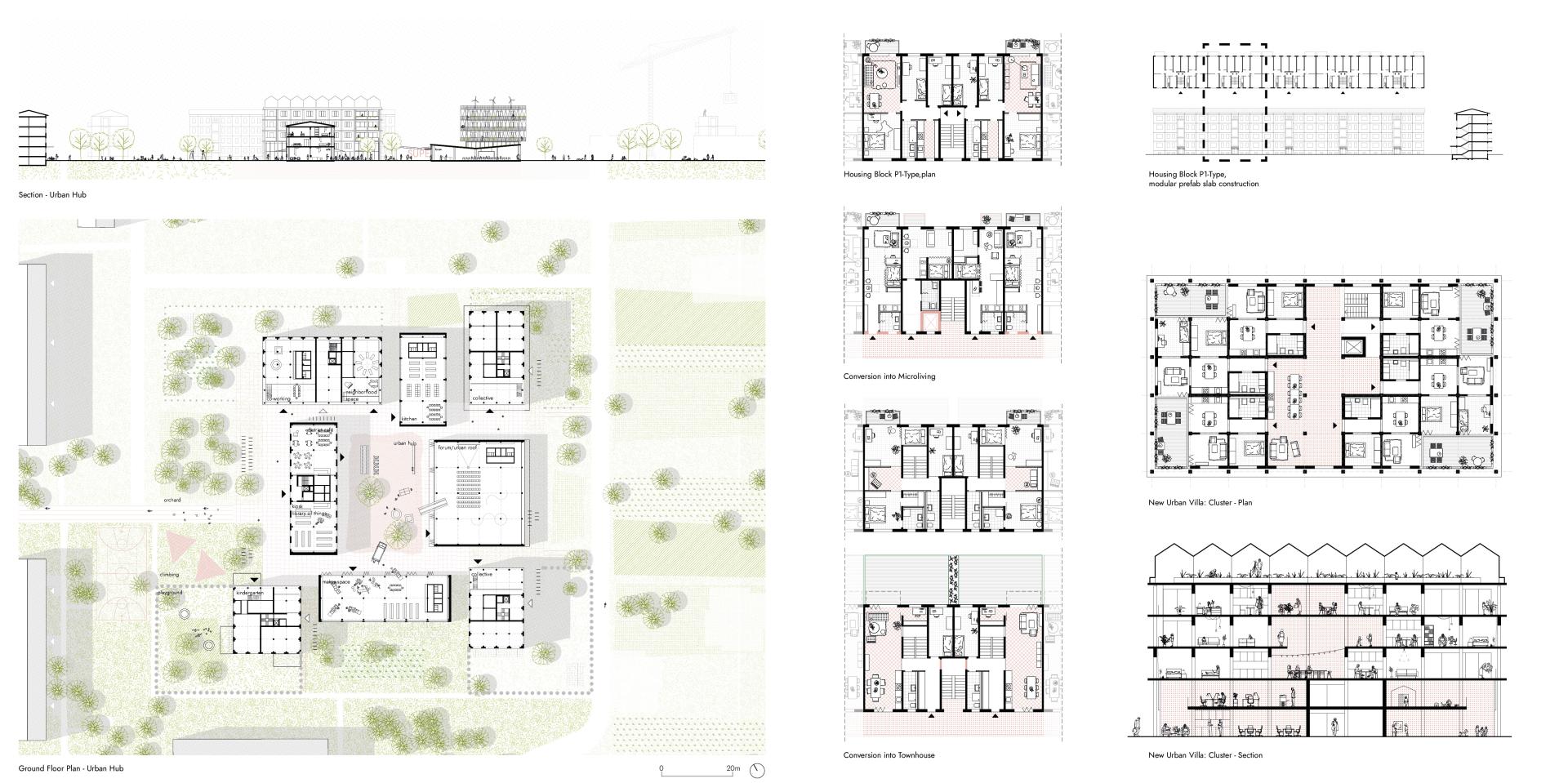Superumbau 2035
Basic information
Project Title
Full project title
Category
Project Description
EU-Green-Deal makes lignite mining obsolete. Due to the regions close cultural and economic link to mining, they are facing fundamental structural change. New, optimistic narratives are needed. We envision those regions in a creative process of “SUPERUMBAU” shaping environment collectively. It opens transformation to positive interpretation, expressing the belief to use the existing and connecting to Hoyerswerda in Lusatia. This knowledge is exemplary for European Cities in structural change.
Geographical Scope
Project Region
Urban or rural issues
Physical or other transformations
EU Programme or fund
Which funds
Description of the project
Summary
Lusatia region is exemplary for immense structural change related to brown-coal industry. As conflicts over ecological compatibility and consequences for both people and landscape are fuelled by remaining power plants and opencast mines, coal phase-out until 2038 has already been set up. As desirable this development is in terms of the ecological crisis, as challenging it is for overcoming its regional consequences. Beyond that, coal exit is not to be equated with sufficient change towards sustainability.
Recently federal and state governments have declared Lusatia a European model region for structural change. As part of this program there have been initiatives to locate big research facilities in the area dealing with climate change and increasingly scarce resources - the pressing questions of the future. As the so called “Zukunftsfabrik Lausitz” aims to be a real-world laboratory for those urging topics of today, it creates new prospects for the region. This may be a major opportunity for strengthening the regional structure. Nevertheless no spatial visions are included and question must be asked, how this incentives will influence sustainable development, how new networks can be linked to the old ones, how it will join up with the history of the places and what spatial implications it brings for landscape and urban places in particular. We would like to point out those trends and propose our own thoughts on an exceptional example in this process of change - Hoyerswerda.
The city that has been negatively affected by shrinking since 1990 becomes now an important hub for those developments and creates new urban qualities. Accepting the dialectic of the medieval and the socialist city it produces a diverse and creative habitat.
Key objectives for sustainability
Following the decline of the industry, from 2000 on, city planning decided to shrink Hoyerswerda Neustadt from the outskirts to the centre to react on the moving population. As new tendencies arise through national initiatives and the emerging “Lausitzer Seenland”, as well as rising housing pressure in metropolis, people once again start to move to Hoyerswerda. In order to avoid urban sprawl and resealing surface that has just been unsealed due to the dismantling process, Neustadt should now be concentrated in form of a compact city, focusing construction to hubs and conversion of existing structures.
Dense cities and neighborhoods are the prerequisite for economical use of land, resources, financial means and energy. For a high quality of life, attractive public spaces should be created at the same time. Urban resources will be reused while new buildings are only built inside the cities perimeter. Admitting its characteristic as a green city, it generates benefits of being a city of short distances and discovers creative use of its free spaces. New land-use certificate trade will stimulate this strategy by generating income for unsealing surface.
Taking advantage of its socialist modular slab construction, parts of buildings which need to be dismantled will be reused in new construction, creating a building material cycle. In the course of this dismantling process former buildings are mined for urban resources, the sites are unsealed and then conversed into experimental and productive agrarian and forestry lands.
Prefabricated building material is dismantled carefully, then sorted and stored in the material hub. As only part of the material will be re-assembled in Hoyerswerda, most of the elements will be exported to high redensificating places in metropolis (e.g. Berlin).
At the same time existing buildings not fulfilling today’s demands will be transformed, providing new urban qualities and housing models.
Key objectives for aesthetics and quality
The project aims to revalue the existing built environment by enhancing the functional quality of its spaces and reusing building parts.The monotone aesthetics of GDR's modular slab buildings is not the only reason for its bad reputation, but a result of its outdated spatial configuration in its urban as in architectural scale. We propose floor plan configurations for new forms of living and enhance urban qualities by collective uses in groundfloors and in-between spaces like deck-accesses.
On the other hand we are convinced, that reusing old building parts pro-actively in new construction, such as modular facade-slabs, might convey a sense of belonging to new and old inhabitants.
Punctual density paired with active ground floors create new urban qualities. The existing facilities of daily needs are complemented by new buildings and will form urban focal points as hubs of each district. The façades facing the square support its accentuation. New forms of collective and intergenerational living, working as well as public spaces for social interaction will find place.
Key objectives for inclusion
Living in Hoyerswerda means great possibilities for creativity, much space for experimentation. Its inhabitants engage in dialogue and contribute actively to the participation process of “SUPERUMBAU”. Connecting to local knowledge, networks and culture, “SUPERUMBAU” will be accompanied by a discourse in which citizens (visitors, old and new residents) are involved in shaping transformational processes. We envision this public participation in form of a citizens' council complementing conventional political planning and decision-making bodies. In addition, this discourse could also take form in cultural events, conferences, workshops and experimental use of space or buildings. This process is supposed to create an attractive and inclusive living environment.
As existing buildings may be unfit for today’s diverse needs they will be transformed into townhouses, accessible or micro-living units. New urban villas will offer multigenerational housing and common space for social interaction.
Ground floor brings new life to Hoyerswerda, as it’s going to be developed for collective uses especially in the hubs and along the Urban Connector. In public co-working spaces researchers could work flexible some days a week connecting to their neighbourhood. It means a space for possibilities and interaction. Young entrepreneurs can rent small spaces for their needs; a neighbourhood café, workshop or open gym would open their doors and temporarily fade inside and outside. Roofs could act for food or energy production, as collective garden or as ecological space.
Physical or other transformations
Innovative character
City is a resource, no disposable item. We understand city as a cumulation of spaces, buildings and infrastructure, its intangible values like urbanity, knowledge and culture as well as the networks and daily life of its people.
Building new perspectives, all existing resources should be integrated in an arrangement to form a new whole connecting to the past.
As future architects we are convinced that “To Recycle is to Design” (Ricci M., The Recycle GOA. Towards a proactive Manifesto, 2016). We take the existing as starting point imagining new lifecycles for spaces that have gone obsolete.
Apart from that we need to design for change, creating resilient cities able to transform crises into opportunities, “adaptive to changing circumstances, acting with a proactive approach” (Oliva, J., Urban Resilience. The Ad-ap(c)tive City, 2017).
Making this new approach possible political changes ought to be made in form of binding land-use reduction, or new building regulation focusing on transformation and rehabilitation instead of new construction.
Our approach for creating new prospects for Lusatia region and resilient city planning in Hoyerswerda can be exemplary and transferable to other lignite mining areas of Central and Eastern Europe that are facing similar processes of structural change.


